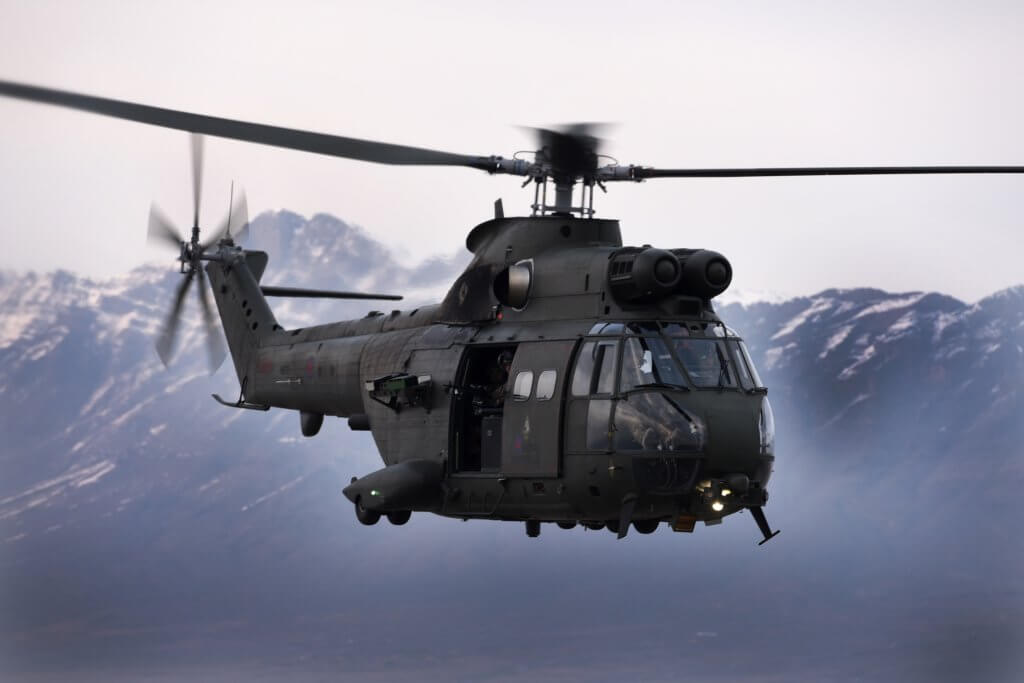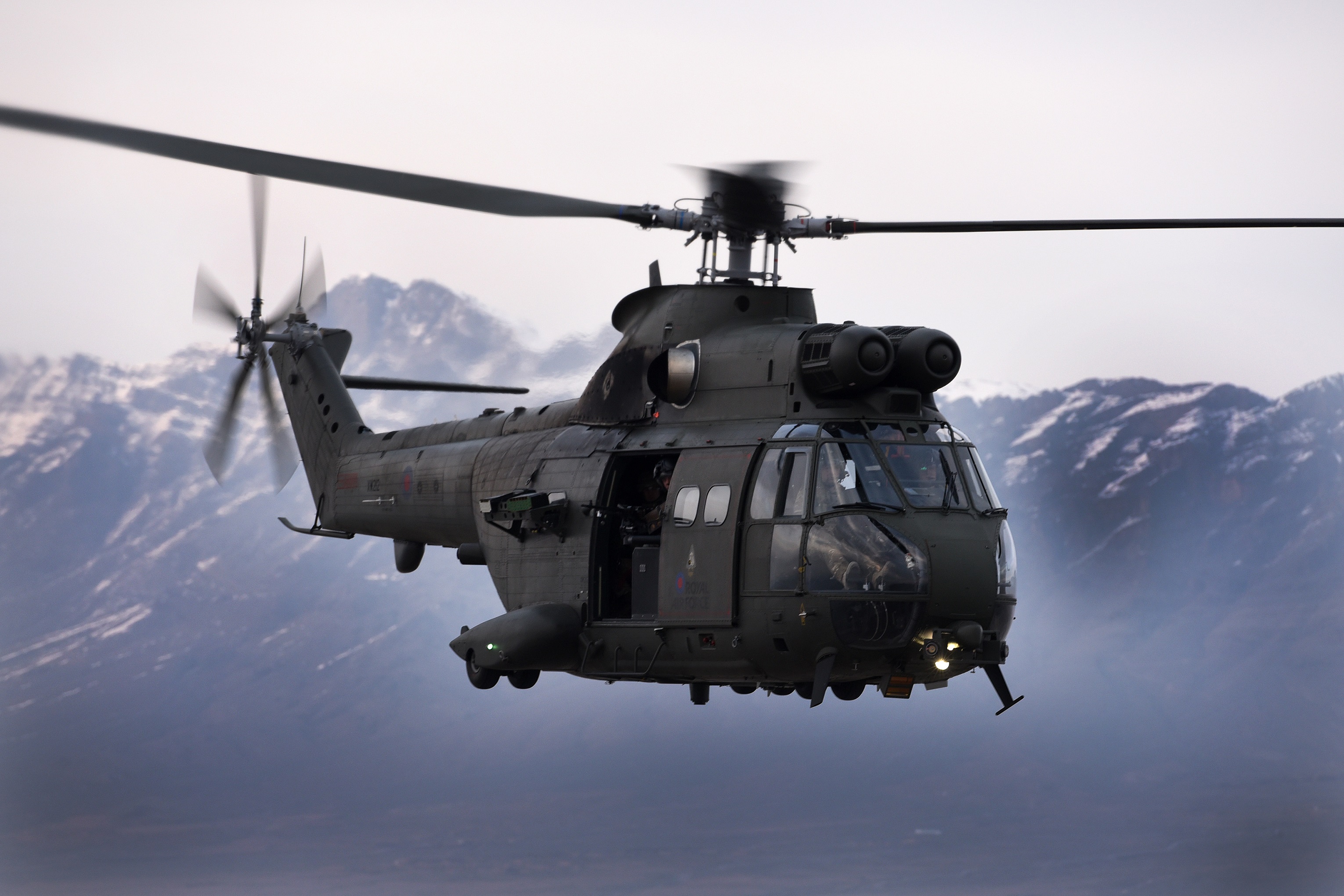While they keep a keen eye on U.S. rotorcraft development, European members of NATO likely will develop a complementary, interoperable next-generation medium helicopter of their own to enter service in the mid-2030s.
There are no formal requirements for NATO’s Next-Generation Rotorcraft (NGRC) except for general improvements on the speed, range and endurance of legacy helicopters. The U.K. and other European NATO nations are tracking the U.S. effort to replace its UH-60 Black Hawk helicopters, but have not settled on a path forward.
The timeline for NGRC’s entry to service tracks with the expected retirement from service of about 1,000 medium-lift helicopters currently operated by non-U.S. members of the alliance before 2030.

Lt. Cdr. Andrew White, head of U.K. Royal Navy capability air maneuver concepts, says NGRC might not need to be super speedy like the U.S. Future Long Range Assault Aircraft (FLRAA), which seeks a max cruise speed of 280 knots. NATO has left specific design decisions up to industry rather than dictate a conventional, tiltrotor or coaxial configuration.
“We don’t necessarily see that it has to go super-fast,” White told the Royal Aeronautical Society’s NGRC Conference on Jan. 20. “We’ve kept the requirements relatively broad so that it could be a conventional [helicopter] or it could be a tilt or compound and we’ll let industry come back to us with what is the best way for that aircraft to be designed so it will meet our requirements.”
“With FVL, we’re working closely with the U.S. . . . so that we can tie this to FVL as we move forward, and the U.S. are very much involved in NGRC,” White said. NGRC is likely to “work collaboratively” with the aircraft developed by the U.S. Army under its Future Vertical Lift program.
About 1,000 helicopters — including, among non-U.S. NATO nations, around 100 Mil Mi-8/17s, 191 Airbus SA330 Pumas, 167 Sikorsky S-70/UH-60 Black Hawks, 143 Leonardo AW101s and 331 NH90s — are scheduled to retire between 2030 and 2045.
NGRC requirements are deliberately broad so industry can offer up a wide range of options, White said. The resulting aircraft should be between eight and 15 metric tons (17,000-33,000 pounds) and enter service in 2035.
The U.S. military is preparing for its own fleet of UH-60 Black Hawks to retire around that same period by developing a Future Long-Range Assault Aircraft to replace them. Running neck and neck in that program are the Bell V-280 Valor advanced tiltrotor and the Sikorsky-Boeing SB>1 Defiant coaxial compound helicopter.
Adopting FLRAA from the U.S. from 2035 makes economic sense and would promote interoperability among NATO allies, but that 30,000-pound aircraft might not fit all of Europe’s requirements. It will not satisfy the U.K.’s need for a Puma replacement by 2025, for instance.
The main consideration with NGRC seems to be whether to compete with U.S. FVL (FLRAA/FARA) by developing a Euro-centric common multirole rotorcraft by 2035 or hitch onto what comes of FVL.
White said the European-developed future utility rotorcraft likely “will be complementary to that as opposed to necessarily a rival.”
Jerome Combe, head of portfolio policy and strategy for Airbus Helicopters France, warned that failing to develop a European-specific NGRC that will address military rotorcraft requirements past 2040 would risk the market-leading position Airbus and Leonardo currently enjoy in the civil and parapublic sectors.
“Without a major European rotorcraft, Europe takes a risk, Airbus takes a risk, Leonardo takes a risk,” Combe said.
Airbus is building the H160M helicopter that will be common to the French Army and Navy and should enter service in 2025. The company also is leaning on its legacy building the Tiger attack helicopter, its involvement with the NH90 consortium and development of the Airbus Rapid and Cost Efficient Rotorcraft (RACER) in its bid to remain involved with NGRC.
For its part, Leonardo touts the AW101 and the family of aircraft that includes the AW139 and 169, plus the speed capabilities of the AW609 civil tiltrotor, as qualifications for its involvement in NGRC, said Steve Allen, vice president of strategy for Leonardo Helicopters U.K.
Where Germany and France are largely aligned with Airbus, the U.K. and Italy have an established relationship with Leonardo Helicopters, Allen said. It may behoove the European rotorcraft industry to collaborate on NGRC the way it did on NH90 in order to support the industry and widen the market for the resultant aircraft, he said.
Based on the 25-year saga of developing the multinational NH90 helicopter, the time to begin developing a common airframe to replace Europe’s retiring medium-lift utility helicopters is now, White said. Current technology could improve on existing operational rotorcraft like the Puma — scheduled to retire from U.K. military operation by 2025 — but an immediate replacement would remain technologically relevant only to about 2045, when NGRC and U.S. FVL are still fielding, White said.
“Twenty years means we need to be getting after this now,” he said. “The good news is that we are doing so, so hopefully we can develop something that is really capable as and when it is needed as opposed to rushing it out the door at the last minute.”
NGRC will be delivered in several productions beginning in 2035 and running out to 2055. Joining the U.K. in the development program so far are France, Germany, Greece and Italy. More NATO nations are likely to sign on, though some, including the U.K., are eyeing the U.S. FLRAA as a potential future rotorcraft, White said.
Royal Marines Col. Paul Morris, assistant head of capability air maneuver plans for British Army Headquarters, said the U.S. FLRAA timeline does not fit with U.K. requirements to replace its 23 aging Puma helicopters.
“We don’t believe that FLRAA will come online rapidly enough to replace the capability currently delivered by the Puma,” Morris told the Royal Aero Society conference. “Suffice to say that they just don’t match in terms of the first entry into service on the other side of the pond and our own requirement to replace medium.”
Airbus’ Combe suggested the H175 could be a suitable stopgap replacement for the Puma until NGRC is available after 2035.









